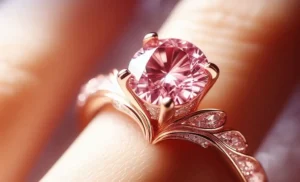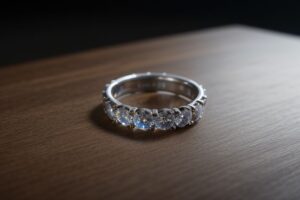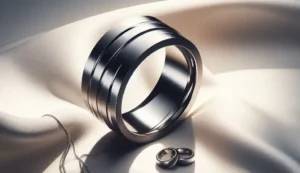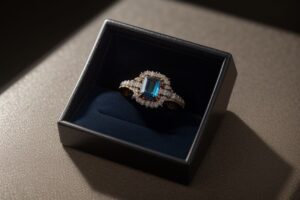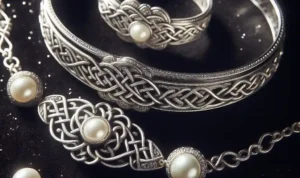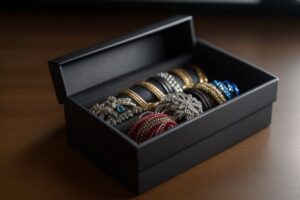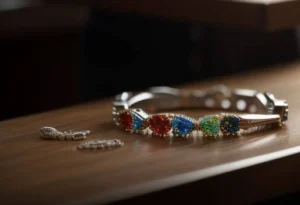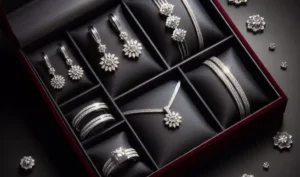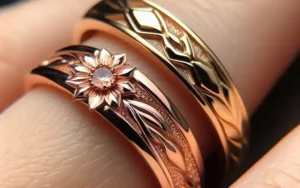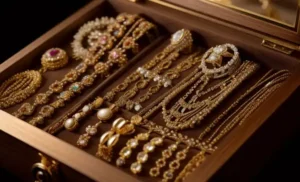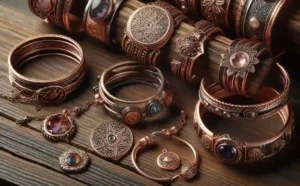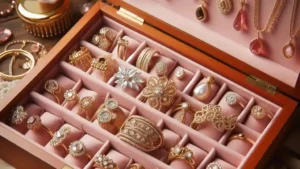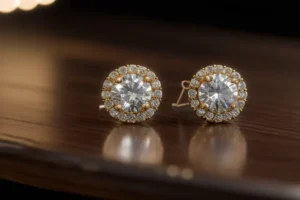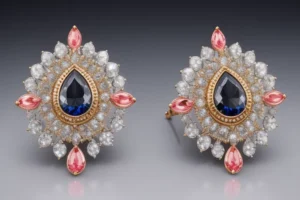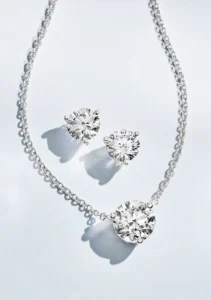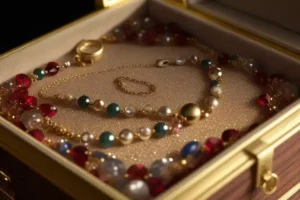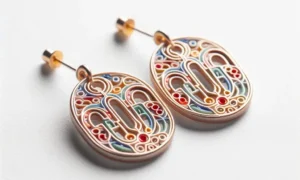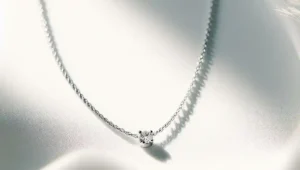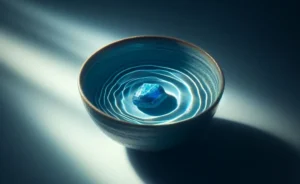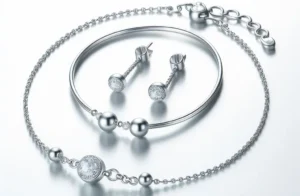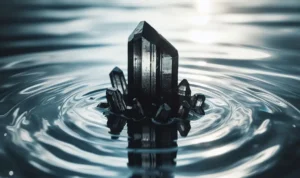Sterling silver jewelry boasts an allure that has captivated hearts for centuries. Its lustrous sheen and timeless elegance make it a favorite among jewelry lovers.
However, a common query often arises: Can sterling silver jewelry withstand the test of water? Whether you’re caught in the rain, planning a swim, or simply wondering if your shower routine could tarnish your beloved pieces, understanding the relationship between sterling silver and water is crucial.
In this comprehensive blog post, we’ll dive into the depths of how water affects sterling silver jewelry and how you can protect and maintain your precious pieces for years to come.
Can Sterling Silver Jewelry Get Wet?
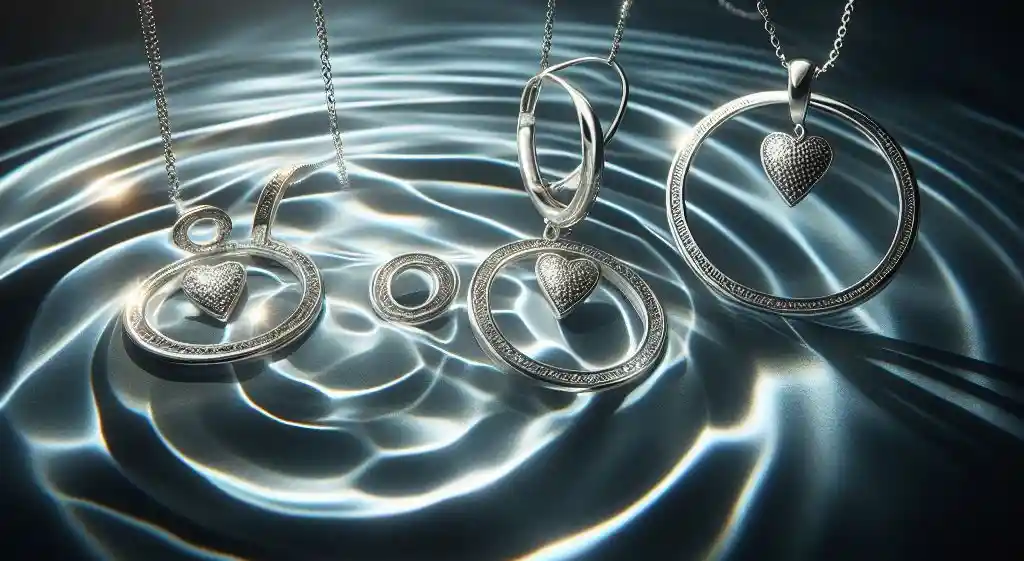
Yes, sterling silver jewelry can get wet, but it’s not without its complications.
Exposure to water itself isn’t immediately harmful to sterling silver; however, it’s the elements often found in water, such as chlorine, salts, and other chemicals, that pose a risk.
These substances can accelerate tarnishing and potentially harm the jewelry’s finish and overall integrity. While an occasional splash of water won’t spell disaster, regular and prolonged exposure, especially to chemically treated or saltwater, can lead to issues requiring more intensive care.
Therefore, it’s advisable to limit your sterling silver jewelry’s contact with water and to take preventive steps to protect it when exposure is unavoidable.
Understanding Sterling Silver and Its Composition

Sterling silver, a preferred material for fine jewelry, is an alloy that marries the inherent beauty of silver with the resilience required for daily wear.
By definition, it contains 92.5% silver, a precious metal known for its radiant luster and softness, which, while visually appealing, makes it somewhat impractical for crafting durable items on its own.
To counteract this malleability, the remaining 7.5% of the alloy typically consists of other metals, such as copper, which imbues the sterling silver with enhanced strength and durability. This deliberate composition is a balancing act; it preserves the desired aesthetic qualities of pure silver while significantly improving its resistance to wear and tear.
However, it is precisely this incorporation of copper that predisposes sterling silver to tarnish over time, particularly when exposed to certain environmental factors, including those found in water. Understanding this fundamental nature of sterling silver is essential for anyone looking to maintain their jewelry’s sparkle and longevity.
The Effects of Water on Sterling Silver Jewelry
While water in its purest form is generally harmless to sterling silver, the real issue arises from the various substances that can be dissolved in it. Chlorine, commonly found in tap water and swimming pools, alongside salts present in saltwater environments, can instigate a chemical reaction with the sterling silver.
This reaction causes the formation of silver sulfide on the surface, manifesting as a dark tarnish. Other pollutants and sulfur compounds, often found in industrial or highly urbanized areas, can also contribute to this tarnishing effect.
High humidity levels further exacerbate the situation by providing a conducive environment for these reactions to occur more swiftly. These elements combined can significantly accelerate the tarnishing process, affecting the aesthetic appeal and integrity of the jewelry.
It’s crucial for owners to be aware of these factors and to minimize their sterling silver’s exposure to such conditions to preserve its gleaming appearance.
Can You Wear Sterling Silver in the Shower?
Opting to shower with sterling silver jewelry on is generally inadvisable. The water you use for showering can contain chlorine, a substance known for its aggressive effects on sterling silver, leading to quicker tarnishing.
Furthermore, personal care products, such as shampoos and soaps, are often formulated with chemicals that, while beneficial for your hair and skin, can negatively impact your jewelry.
These products can accelerate the tarnishing process and may leave a dulling film on the surface of the silver, diminishing its natural luster and shine. In light of these considerations, it’s best to remove your sterling silver items before stepping into the shower.
This simple precautionary step can extend the life and beauty of your jewelry, ensuring it continues to add that special sparkle to your everyday look.
The Impact of Swimming Pools and Hot Tubs on Sterling Silver
Delving into the interaction between sterling silver and the chemically treated waters of swimming pools and hot tubs unveils a less-than-ideal scenario for your cherished pieces. The primary concern revolves around chlorine and other chemical disinfectants commonly used to maintain pool and hot tub cleanliness.
These substances, particularly chlorine, have a notorious reputation for their aggressive chemical behavior towards sterling silver, instigating reactions that lead to tarnishing and potential corrosion. The warm temperatures often associated with hot tubs can further intensify these reactions, accelerating the tarnishing process.
It is the combination of heat and chemicals that poses a significant risk, compromising the integrity and appearance of sterling silver jewelry. Given these factors, it is prudent to preemptively remove any sterling silver items before indulging in the pleasures of swimming or relaxing in a hot tub.
This precautionary measure is a simple yet effective strategy to safeguard your jewelry against the harsh effects of chemical exposure and to ensure its enduring beauty and structural integrity.
Sterling Silver and Saltwater: A Risky Combination
Immersing sterling silver jewelry in saltwater can present a series of challenges for its preservation. The salt, a natural abrasive, not only accelerates the tarnishing process but can also lead to the more severe issue of metal pitting over time.
Such effects are not immediately reversible and can compromise the jewelry’s structural integrity and aesthetic appeal. This is of particular concern for those who enjoy coastal activities, where exposure to the ocean’s saline environment is inevitable.
The nature of saltwater to corrode and damage sterling silver necessitates caution. It’s advisable for individuals to preemptively safeguard their pieces by removing them prior to any marine adventure. This action is a simple yet crucial step towards ensuring the longevity and luster of your sterling silver treasures.
By understanding the risks and implementing protective measures, enthusiasts can enjoy both the beauty of their jewelry and their time by the sea without compromise.
How to Protect Your Sterling Silver Jewelry from Water Damage
To safeguard your sterling silver jewelry from the adverse effects of water, preemptive measures are essential. A novel approach involves the application of a thin coat of clear nail polish on the jewelry. This creates a protective shield, mitigating the risk of tarnish caused by moisture and chemicals.
It’s crucial to remove sterling silver pieces before participating in water-related activities, such as swimming or showering, to avoid prolonged exposure to harmful substances. Additionally, storing your jewelry in a moisture-free environment when not in use is beneficial.
Opt for airtight containers lined with anti-tarnish strips to keep the pieces dry and secure. Regular checks for signs of wear or damage can also help in taking timely action to preserve the jewelry’s condition. Implementing these strategies effectively minimizes the potential for water damage, maintaining the integrity and shine of your sterling silver accessories.
Cleaning and Caring for Your Sterling Silver Jewelry
Maintaining the radiance of your sterling silver jewelry involves a routine of gentle cleaning and careful handling. Begin by wiping down your jewelry with a soft, lint-free cloth after each wear to remove surface oils and residues. This simple step can prevent the accumulation of substances that contribute to tarnishing.
For a deeper clean, create a solution of lukewarm water and a few drops of mild dish soap. Submerge the jewelry, gently agitate, and use a soft-bristled brush, such as a toothbrush, to lightly scrub any intricate details. Rinse thoroughly with clean water to remove any soap residue and dry completely with a soft cloth.
Avoid using abrasive materials or harsh chemicals, as these can scratch the silver or strip its natural patina. If your jewelry displays signs of tarnish, consider using a silver polishing cloth designed specifically for sterling silver, which can restore its shine without damaging the metal.
Engaging in these practices will not only keep your sterling silver jewelry looking its best but also extend its lifespan, allowing you to enjoy its beauty for years to come.
When to Seek Professional Help for Water-Damaged Sterling Silver
In instances where your sterling silver jewelry exhibits extensive tarnish or has sustained damage from prolonged water exposure, consulting with a professional jeweler is a wise decision.
They possess the specialized tools and knowledge to accurately evaluate the extent of the damage and can perform a thorough cleaning process that goes beyond at-home care methods.
Moreover, for pieces that show signs of severe wear or corrosion, a professional can offer restoration services or recommend appropriate steps to salvage the jewelry. Their expertise ensures that your cherished sterling silver pieces are treated with the utmost care, potentially restoring them to their original splendor.
This professional intervention is particularly beneficial for heirloom or intricately designed items, where the risk of further damage through amateur restoration attempts is high. Engaging a jeweler’s services can be a crucial step in preserving the beauty and integrity of your sterling silver jewelry after significant water exposure.
FAQs
Can I prevent my sterling silver jewelry from tarnishing?
While it’s challenging to completely prevent tarnishing, regular cleaning and minimizing exposure to harsh substances can significantly slow the process. Wearing your silver often can also help maintain its shine due to the natural oils in your skin.
Is it safe to wear sterling silver every day?
Absolutely! Sterling silver is durable enough for everyday wear. Just remember to take it off during activities that could expose it to harmful chemicals or abrasive substances.
Can tarnished sterling silver be restored?
Yes, tarnished silver can often be restored to its original luster. Regular polishing with a cloth specifically designed for silver can remove tarnish. For heavily tarnished pieces, professional cleaning might be necessary.
How often should I clean my sterling silver jewelry?
Light cleaning with a soft cloth after wearing and a more thorough cleaning monthly can keep your silver shining bright. Adjust the frequency based on how often you wear it and your personal body chemistry.
Is it okay to store all my jewelry together?
It’s best to store sterling silver separately in a dry, airtight container with anti-tarnish strips. Keeping it away from other metals can prevent scratches and reduce tarnishing.





